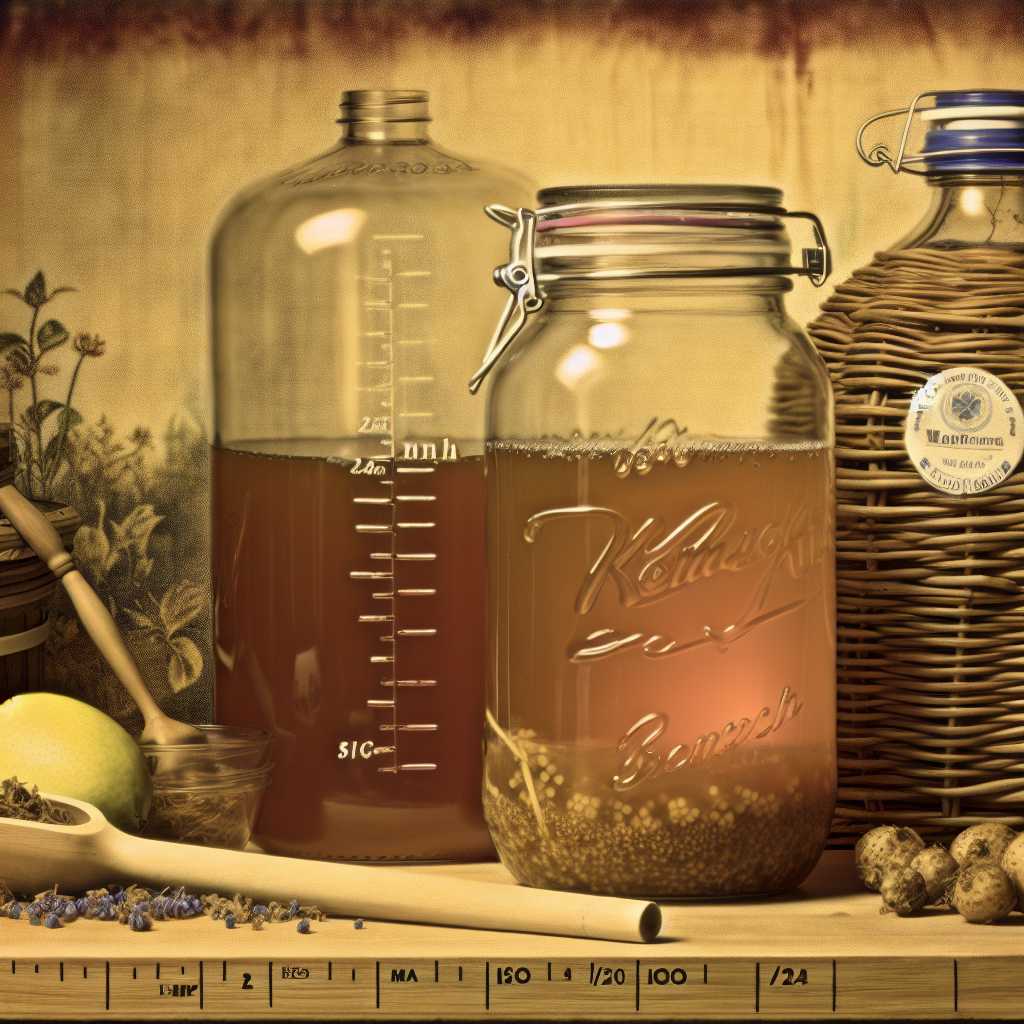How to Make Kombucha at Home: A Half Gallon Recipe

How to Make Kombucha at Home: A Half Gallon Recipe
Kombucha, a fermented tea drink, has been gaining popularity in recent years due to its potential health benefits and delicious taste. Making kombucha at home is a great way to save money and customize the flavors to your liking. In this article, we will provide a step-by-step guide on how to make kombucha at home using a half-gallon recipe.
What is Kombucha?
Kombucha is a type of fermented tea that is made by adding a SCOBY (symbiotic culture of bacteria and yeast) to sweetened tea. The SCOBY ferments the tea over a period of 7-14 days, resulting in a tangy, fizzy drink that is rich in probiotics and other beneficial compounds.
Ingredients and Equipment
Before we begin, let’s gather the ingredients and equipment needed to make kombucha at home:
Ingredients:
– 4 cups of water
– 4 organic black tea bags
– ½ cup of white sugar
– ½ cup of plain, unflavored kombucha (for starter liquid)
– 1 SCOBY
Equipment:
– 1-gallon glass jar
– Cloth cover or paper coffee filter
– Rubber band or string to secure the cover
– Pot for boiling water
– Wooden spoon
– Glass bottles for bottling the finished kombucha
– Funnel
– Plastic or wooden spatula
– Small towel or cloth for cleaning up spills
– pH testing strips (optional)
Step 1: Prepare the Tea Base
Start by boiling 4 cups of water in a pot. Once the water reaches a rolling boil, remove it from the heat and add the 4 organic black tea bags. Allow the tea to steep for 5-7 minutes. Remove the tea bags and stir in the ½ cup of white sugar until it is completely dissolved. Let the tea cool to room temperature.
Step 2: Add the Starter Liquid and SCOBY
Once the tea has cooled, pour it into the 1-gallon glass jar. Add the ½ cup of plain, unflavored kombucha to the jar, which will act as the starter liquid. Gently place the SCOBY on top of the tea mixture. Cover the jar with a cloth or paper coffee filter and secure it with a rubber band or string.
Step 3: Ferment the Kombucha
Place the jar in a warm, dark place, such as a cupboard or pantry, where it can ferment undisturbed. The ideal temperature for fermenting kombucha is between 75-85°F (23-29°C). Let the kombucha ferment for 7-14 days, depending on your desired level of tartness and fizziness. Keep an eye on the jar during the fermentation process to ensure that no mold is forming on the surface of the kombucha.
Step 4: Bottle the Kombucha
Once the kombucha has reached your desired level of fermentation, it’s time to bottle it. Before bottling, wash your hands thoroughly and sterilize the glass bottles and funnel with hot water. Carefully remove the SCOBY from the jar and set it aside. Use a plastic or wooden spatula to gently stir the kombucha and distribute the yeast sediment.
Using the funnel, pour the kombucha into the glass bottles, leaving an inch of headspace at the top of each bottle. If you’d like to add flavorings, such as fruit juice or ginger, now is the time to do so. Seal the bottles tightly with their caps.
Step 5: Second Fermentation (Optional)
For those who would like an extra fizz in their kombucha, a second fermentation can be done. Simply leave the sealed bottles at room temperature for 1-3 days to allow for carbonation to develop. Keep an eye on the pressure buildup by slightly burping the bottles every 24 hours. Once you have achieved the desired level of carbonation, transfer the bottles to the refrigerator to halt the fermentation process.
Step 6: Enjoy Your Homemade Kombucha!
Your homemade kombucha is now ready to be enjoyed! Chill the bottles in the refrigerator for a few hours before serving. When pouring the kombucha into a glass, be mindful of any sediment that may have settled at the bottom of the bottle. You can also save a cup of the finished kombucha to use as a starter liquid for your next batch.
Safety Precautions
When making kombucha at home, it’s important to practice good hygiene and follow safety precautions to prevent contamination and spoilage. Here are a few tips to keep in mind:
– Wash your hands and sanitize equipment before handling the SCOBY and starter liquid.
– Use only glass, stainless steel, or food-grade plastic for making and storing kombucha. Avoid using metal, as it can react with the acidic nature of kombucha.
– Keep the fermentation jar covered to prevent dust, fruit flies, or other contaminants from entering.
– Check the kombucha periodically during fermentation for signs of mold or other irregularities. If mold does appear, discard the batch and start fresh with a new SCOBY and starter liquid.
– Store bottled kombucha in the refrigerator to slow down the fermentation process and preserve its flavor and carbonation.
In conclusion, making kombucha at home is a rewarding and cost-effective way to enjoy this probiotic-rich beverage. With a few simple ingredients and a bit of patience, you can create your own delicious and healthy kombucha right in your kitchen. Experiment with different tea blends, fruit juices, and flavorings to craft unique kombucha flavors that suit your taste preferences. So why not give it a try and start brewing your own batch of homemade kombucha today? Cheers to your health and happy fermenting!
[elementor-template id=”430″]
[elementor-template id=”433″]




0 Comments